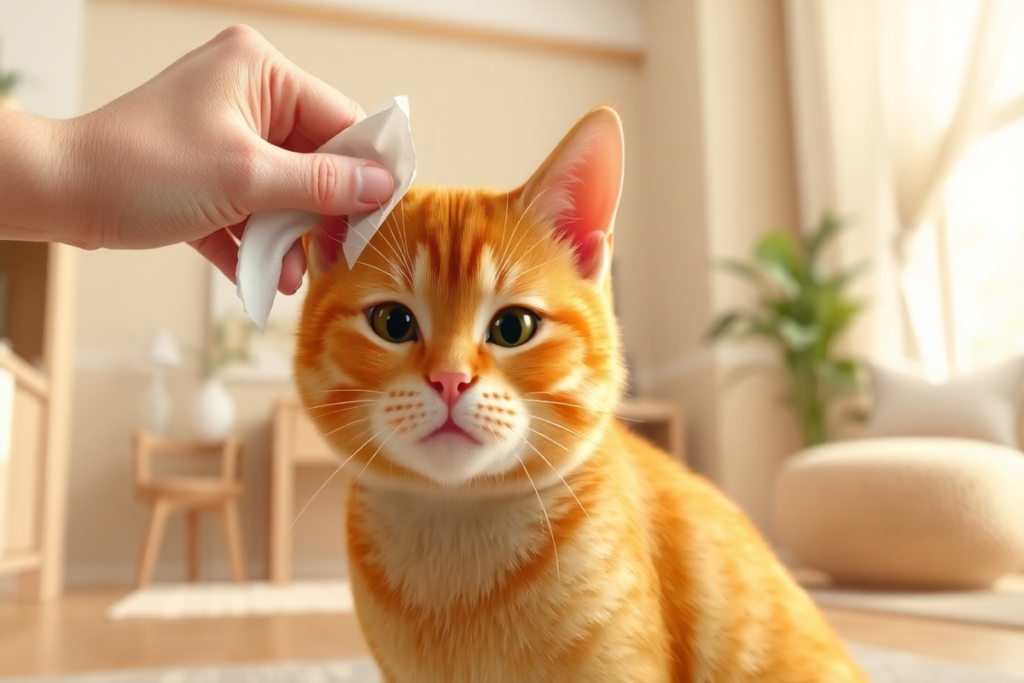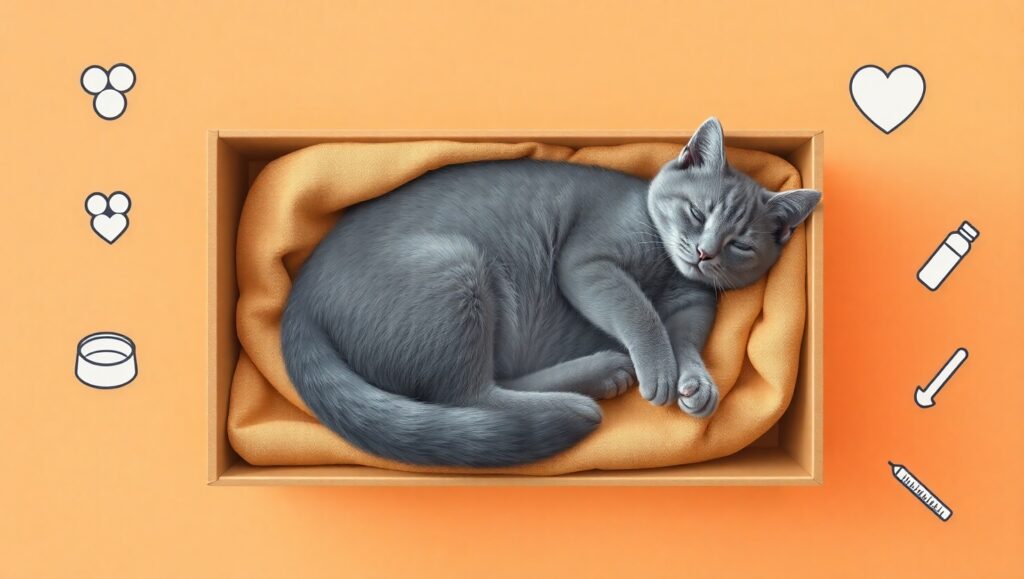Fed up with watching your favorite couch become a shredded mess of claw marks and threads? You’re not alone; cat owners everywhere deal with the same daily battle. But the good thing is that your cat isn’t trying to ruin your furniture. Your cat scratches, just like they purr, stretch, or chase shadow; scratching is just part of life for a cat.
But you don’t have to choose your cat or your couch. With a couple of smart methods (and no yelling or declawing), you can convince your cat to scratch correctly, which will leave your couch looking brand new. This guide will help you understand why cats scratch, the factors for selecting the best scratching post, and some proven tips to protect your home and keep your cat healthy and happy.
Let’s get started – and get your furniture back.
Why Do Cats Scratch?
Scratching is completely normal for cats. It’s not misbehavior; it’s how they stretch, sharpen their claws, mark their territory, and even relieve stress or excitement. Cats’ paws contain scent glands, so scratching also acts as a way to mark their scent. In order to eliminate your cat’s scratching of the furniture, you must work with their instincts, not against them.
Understanding Cat Behavior
Before you can begin to prevent your cat from using your furniture as their scratching post, it’s important to understand the reason they scratch your furniture to begin with. Cats don’t think “right” or “wrong” (and they’re not being “bad” or “disobedient”). They’re acting on instinct. When a cat scratches, they are not thinking about what you want. They are asking themselves:”Where do I want to scratch?”
Scratching Is a Natural and Necessary Behavior
Scratching is an important activity for all cats for several reasons:
- Nail Maintenance: Scratching sheds the dead outer layer of their nails.
- Stretching: Scratching allows them to stretch and flex their back and shoulders properly.
- Territory Marking: Scratching has scent glands in their paws that leave a scent mark marking their territory.
- Stress Relief: Scratching is a way for cats to relieve stress, whether they are excited or anxious.
Why Punishment Doesn’t Work
If you punish your cat for scratching on the furniture, you might be making things worse! You will confuse or stress your cat and fail to stop the behavior; they will scratch somewhere else. Instead of trying to stop your cat from scratching altogether, your goal should be to redirect that behavior to a more acceptable and attractive location. In other words, subjectively, you shouldn’t stop the instinct; rather, work with it.
Provide Suitable Scratching Posts

Choosing The Right Scratcher
Most cats tend to love long, stable vertical scratchers (32 inches minimum) made of sisal braided rope, which is durable and satisfying to scratch. Other cats may prefer horizontal scratchers, especially those made from corrugated cardboard or wood. Try different styles to see what your cat loves.
Material Quality and Stability
An appropriate scratching post shouldn’t move when used. If your post is unstable, your cat is likely to avoid it or not use it as intended. Ensure it is in a fixed position or has a heavy base. Some cats love to stretch and push their entire body against an item they are scratching, in which case taller is often better.
Place the Post in the Right Location
Location is everything. When deciding where to put a scratching post, put it where your cat already scratches – whether it’s next to your couch or next to the front door. Cats typically scratch most when they are excited, such as welcoming you home or destroying your couch so that it belongs to them instead of you! Seriously, use logic, and don’t put the post in a back room; instead, put it where your cat will at least interact with it.
Make Furniture Unattractive to Scratch
Cats are creatures of habit; if they’ve scratched there before, they’re likely to do it again. As you are working on getting them to use a scratching post or pad, you also want to make those usual scratching spots a little less appealing gently.

Cover the Furniture
Use a fitted sheet, blanket, or slipcover over furniture. Choose a texture that cats don’t like – slick or slippery (such as polyester or plastic) will work best. It takes away the satisfying texture of the object they are used to scratching, temporarily.
Use Double-Sided Sticky Tape
Cats do not like the feeling of being sticky on their paws. If you use pet-safe, double-sided sticky tape on areas they want to scratch, you’ll likely achieve a successful outcome, as it provides instant feedback to your cat upon contact and does not harm your furniture. This way, your cat will know, “This isn’t a good area to scratch.
Try Aluminum Foil or Plastic Mats
Placing aluminum foil or plastic carpet runners with spike sides up on intended furniture may be enough to deter scratching cats. Most cats dislike the texture and sound association of oddities such as these.
Use Scent-Based Deterrents
Many cats find citrus, eucalyptus, or menthol aromas unpleasant. Consider using a cat-safe deterrent spray (check labels for inclusion of non-toxic ingredients) on target furniture as well. These aromas may cover up your cat’s scent and make the area less tempting.
Tip: Keep your deterrents and coverings temporary until your cat is reliably using the new scratching surface.
Use Positive Reinforcement to Encourage the Right Behavior
Cats respond far better to positive praise and rewards than they do with punishment. You will want to ensure that scratching the post is a very rewarding experience.

Reward Immediately
When your cat uses the scratching post, immediately reward them with a small treat, verbal praise in a soft voice, or a quick play session. It helps your cat build a positive association with this new thing.
Use Catnip or Silvervine
Who doesn’t love catnip or silvervine? Sprinkle some catnip or rub some silvervine on the scratching post to make the scratching post irresistible to your cat. Any cat will work to try something new when their scratching area has a captivating sort of catnip or silvervine experience.
Play Near the Post
Try dangling a feather wand or dragging a toy mouse around the base of the scratching post! Your cat is likely to start scratching the post as part of the play. Over time, your cat may begin to see that the scratching post is a part of their fun space.
Don’t Rub Your Cat’s Paws on the Post
Although you may think you are helping your cat by rubbing their paws on the scratching post, do not do that! Your cat may become fearful or stressed when you do something like this, which may lead them to avoid the scratching post entirely.
Keep Patience: Every cat learns at their pace. Keep tummy time short, fun, and rewarding.
Keep Their Claws Trimmed
Trimming your cat’s nails does not prevent them from scratching but can reduce the amount of damage they do. Shorter nails are less likely to rip through fabric or dig deep into wood.

Use the Right Tools
Find a good pair of cat nail clippers or a cat nail grinder. Do not use human nail clippers, as they can cause a cat’s nail to split.
Trim Every 2-3 Weeks
A regular schedule can help keep claws manageable. The more frequent the trim, the more used to the process your cat will become.
Stay Calm and Confident
Choose a time that is quiet when your cat is relaxed. Grab your cat’s paw, gently hold it to extend claws, and cut only the sharp point. Avoid cutting into the pink “quick” in the nail. Cutting this will cause bleeding and pain.
Ask for Help If Needed
If you feel nervous, or if your cat is feeling anxious, seek the help of a groomer or vet. They will be able to show you the proper technique or trim the nails for you.
Never Declaw: Declawing is not just nail trimming; it is a painful surgical amputation that removes the last bone of each toe. Declawing can lead to chronic pain, behavioral issues, and problems with mobility.
Offer Alternatives and Mental Enrichment
Scratching doesn’t just represent the claws of a cat but also stimulation. A bored cat is more likely to engage in scratching, coupled with frustration or pent-up energy.

Provide Multiple Scratching Options
Not all cats enjoy the same texture or angle for scratching. Some cats prefer to scratch stationary vertical options (tall and sturdy), while others like a horizontal pad (cardboard or fabric-covered), and some like an incline scratcher. By providing a couple of different scratching options, you can see what your cat is drawn to.
Rotate the toys
Engaging your cat in playtime can rapidly lose its novelty for them. Rotating your cat’s toys every few days will keep them excited for playtime. Hide a few toys and then bring them back and see if your cat takes an interest in what they previously played with!
Add cat trees or window perches.
Cats can often be found climbing or watching from great heights. Cat trees give your cat the highest surface to scratch and also the ability to climb, some also provide a sleeping nook. Window perches stimulate your cat as they can watch birds or people.
Schedule 10–15 minute play shortcuts Daily
Interactive play includes wand toys, balls, and laser pointers that can help reduce the energy your cat may have. Making playtime part of your daily routine can make limitless impacts with just a couple of 10–15 minute experiences a day.
Why Declawing Is Never the Answer
While declawing may take a glance on the surface to see a quick fix to keep your cat from tearing up your furniture, it is a really damaging and inhumane procedure that creates immeasurable problems.
What Declawing Really Means
Declawing does not simply refer to the removal of the nails but the surgical amputation of the last bone of each toe. That is equal to getting rid of the fingertips of your hand. Not only is the surgery physically painful, but it also permanently changes your cat’s anatomy, which in its own right will present physical and psychological problems.
The Serious Consequences of Declawing
- Chronic Pain: Many cats live with chronic pain or discomfort in their paws after they have been declawed.
- Litter Box Avoidance: Declawing can cause pain when cats dig in their litter, causing some to refuse to use their litter box, creating a frustrating behavioral issue.
- Aggression: Declawed cats may also be more aggressive or fearful, as scratching is a natural defense mechanism they no longer can use.
- Mobility and Health Issues: Removing part of the toe changes the way a cat walks, meaning it will affect balance. Over time, this may lead to problems with joints and arthritis.
A Kinder, More Effective Approach
Rather than inflicting permanent damage, use positive training methods, provide your cat with attractive alternatives such as scratching posts, and provide mental stimulation for your cat. By redirecting their natural scratching instinct, you are preserving your furniture, and it can keep your cat happy and healthy.
Remember: Declawing is never going to be a quick fix. It isn’t kind and has permanent consequences, and there are better ways to deal with scratching.
When to Seek Professional Help
At some point, your cat’s scratching may become hard to manage, or it may also signal an underlying problem despite your best efforts to contain the problem. Here are signs that indicate a consultation with a professional is warranted.

Persistent or Aggressive Scratching
If your cat continues to pursue scrapping objects aggressively despite having plentiful appropriate scratching options, a veterinarian or animal behaviorist can examine your situation and determine why your cat is scratching aggressively and what individualized options may be available to you.
Signs of Stress or Anxiety
Another reason for excessive scratching may include some stress or anxiety, or it may be health-related. Luckily, a veterinarian or animal behaviorist may help manage the underlying problems and improve your cat’s well-being.
Nail or Paw Health Issues
If your cat’s nails appear damaged, have signs of infection, or are appearing unusually long, or if your cat shrieks with the slightest touch around the paw area, it is always advisable to have your cat examined by a veterinarian to avoid additional complications.
Issues with Nail Trimming
If you don’t feel confident trimming your cat’s claws, or if your cat doesn’t cooperate and/or seems stressed during any nail care, professional groomers or veterinarians are available to assist you with or perform nail care to ensure your cat’s claws remain healthy.
FAQs
Why does my cat keep scratching furniture even though I have a scratching post?
Cats tend to be creatures of habit and may revert to their earlier scratching spots due to habit. It could also be that the scratching post isn’t appealing enough. Ensure it is large, stable, and covered with sisal (or other texture that your cat prefers). Additionally, put the scratching post near the furniture they like to scratch and use catnip or toys to encourage the use of the scratching post.
How can I stop my cat from scratching when I’m not home?
Before leaving the house, you can set your cat up for success. You should cover off-limit areas with double-sided tape or aluminum foil and make sure the scratching post is in an accessible location. You can also leave interactive toys out or play relaxing music to help reduce stress while you are away.
Are there any materials I should avoid in scratching posts?
Absolutely. Don’t use carpets on scratching posts, as they often confuse cats into scratching carpets in their homes, likewise with flimsy or unstable scratching posts, which are also generally ignored. Cats prefer full-body resistance and scratching material-i.e., sisal fabric or cardboard- and it’s better if the post doesn’t wobble.
Can older cats be trained to stop scratching furniture?
Yes. It may take longer than with younger cats, but adult cats can learn and adopt new behaviors. Use positive reinforcement, render undesired surfaces unattractive, and provide attractive scratching posts in a high-traffic area. Given diligence and approval, older cats can change their behavior.
Conclusion
Preventing your cat from scratching furniture is entirely possible without having to yell at them or declaw them. There are several strategies you can implement to accomplish this, including providing the appropriate scratching post surface, positively reinforcing the behavior, making the surfaces you would prefer not to be scratched less appealing, and enriching the environment. All of these strategies protect your home while meeting the cat’s instinctual needs.
It’s probably not a good idea to use harsh punishment or inhumane options such as declawing, as both methods generally do more harm than good. With your patience, consistency, and a clear setup for training, you can have a scratch-free environment and a healthier and happier cat.





